Annual dahlias: description, varieties, planting and care
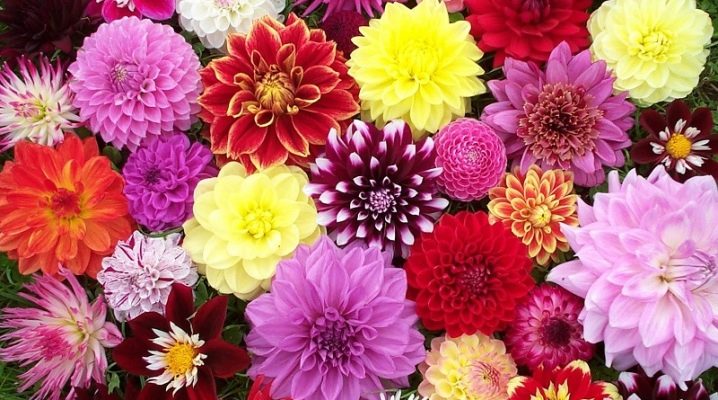
A bit of history
Dahlias are a very common flower that can be found in almost every garden plot. According to some reports, even the ancient Maya people chose this plant to decorate their temples and conduct various rituals. Another, no less ancient people, the Aztecs, used dahlia stems as water pipes, and they ate the roots. Dahlias were brought to Europe from Mexico in 1557, and they were called "akotil". For the first time this plant was studied scientifically in 1791 by the director of the Royal Botanical Garden in Madrid, Antonio Jose Cavanilles, who gave the flower a new name - Dahlia Crinita, which is loosely translated from Latin as “long-haired”.
A few years later, in 1803, the flower received a new name - Georgina (dahlia). It was named after Johann Georgi, professor of botany at the St. Petersburg Academy of Sciences. It was this name that laid the foundation for the genus, which now numbers about 15 thousand varieties.
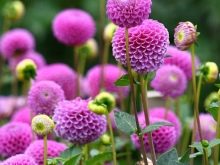


Peculiarities
Let's take a closer look at the description of this amazing flower. It is generally accepted that the name "dahlia" is masculine. This flower is a herbaceous Compositae plant belonging to the Astrov family. The leaves of the flower are simple, located on the stem in pairs, most often have a feathery shape, are 10-40 cm in length; color - green or maroon. The stems are hollow on the inside, dense on the outside, depending on the variety in the wild, dahlias can grow up to 2.5 m in height.
There are perennial and annual varieties of dahlias. At the same time, the latter are highly recommended to novice gardeners because of their beauty and unpretentiousness.
The aerial part of the dahlia dies off at the end of the season, and seeds are formed in the calyx (up to 140 pieces per 1 g), which retain their germination properties for up to 3 years.
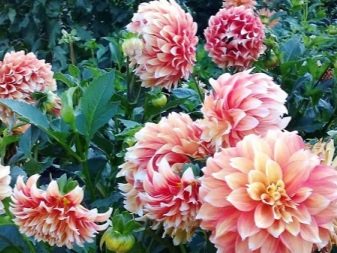
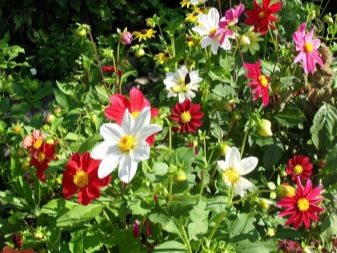
Advantages and disadvantages
Among the advantages of annual dahlias are following:
- annual varieties bloom in the very first year of planting and bloom much more intensively than perennial varieties;
- long flowering period: from the beginning of summer to the first severe frost;
- annual flowers propagate by seeds, which do not require special storage conditions, unlike the tubers of perennial plants;
- take root in any, even the most severe climate;
- more resistant to various diseases and rot.
There are few disadvantages of annuals:
- the flower does not hibernate, and a new plant needs to be grown every year;
- the seeds of hybrid varieties do not retain the properties of the parent plant, therefore, in some cases, the exact same plant will not turn out from the flower's own seeds, and it is necessary to purchase them in a new way.
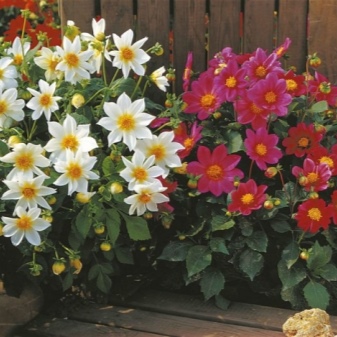
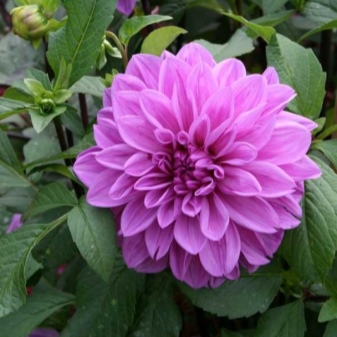
Types and varieties
Depending on the size of the stem of the dahlia variety there are:
- undersized or dwarf (15-30 cm high);
- medium-sized, the height of which is within 50-70 cm;
- tall, growing up to 120 cm.
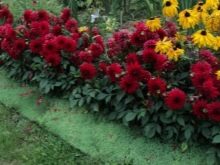
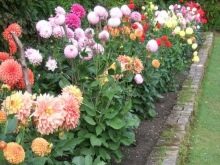

Dahlias delight the eye with their large, beautiful inflorescences. Depending on the variety, plants can have a very different shape of the structure of the flower and petals. It is customary to distinguish between the following groups of dahlias.
- Simple (single row) - usually these are undersized flowers with petals located in one layer, the diameter of the cap is about 10 cm.
- Anemone - the petals in the middle are shorter than the outer ones, with split tips. Most often these are undersized varieties, no higher than 70 cm.
- Cactus - a variety with double inflorescences with long pointed petals-tubes. Stem height is about one meter. The inflorescences are bright, very voluminous.
- Decorative dahlias - stem height 120 cm, inflorescences of the correct round shape, terry petals. Designed primarily for bouquets.
- Semi-cactus - a cross between cactus and decorative. The height of the bushes is 80-150 cm, the diameter of the inflorescence is up to 30 cm, the petals are elongated, they begin to curl into a tube from the middle of the length.
- Spherical - so named because of the shape of the inflorescences in the form of balls with dense tubular petals. The diameter of the ball is 10-20 cm.
- Pompom - very similar to the previous type, the difference is only in size. The inflorescence of the pompom group is denser, 5-8 cm in diameter.
- Nymphae - in shape they resemble a flower of a water lily or a lotus-nymphea (hence the second name "lotus-like"). The shape of the petals is flat, the texture is dense, the peduncle is elongated, the height is 1 m and higher, so the plant needs support.
- Collar dahlias (cuffed) - belong to the category of semi-double dahlias. The middle of the inflorescence consists of yellow tubular petals. The outer petals are longer than the middle ones and are colored differently. Thus, the flower seems to be wearing a kind of collar.
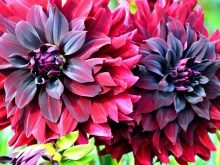
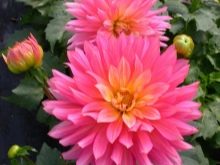
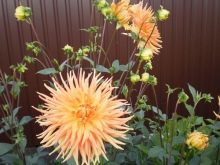
Let's take a closer look at some of the most popular varieties.
- "Funny boys". This variety is considered undersized: the height of an adult plant usually does not exceed 30 cm, although in some cases the bush can grow up to 60 cm.This variety is named because of its multi-colored color - the seeds form a variegated flower bed during germination. This variety does not form a tuber, therefore it must be cut in the first year immediately after flowering. The inflorescence is simple with flat petals and a yellow tubular middle. When opened, the diameter of the cap is 7-10 cm.
- "Vasilisa". The variety belongs to the dwarf category. This is a plant with a stem up to 15 cm high and large double flowers. The size of the inflorescences is 5-7 cm, their color may be different. The variety blooms almost until the first snow, suitable for decorating flower beds, balconies and terraces.
- "Bambino". This variety is also considered undersized and does not grow more than 25 cm. The inflorescences are terry, 6-7 cm in diameter, the color is different, mostly bright. Plants are used as the lower tier of the park landscape, decorating garden paths or decorating summer terraces.
- "Minion". Height up to 40 cm, flowers are simple, 6-9 cm in diameter. The color of the flower is either single or two-colored. The variety looks great as a border or delineation of flower beds.
- Colarette Dandy. This variety belongs to the category of collar and is considered medium-sized - the plants grow up to half a meter, they are a mix of multi-colored flowers. Yellow middle surrounded by semi-double flounces.
- "Firework" - a dwarf bush with variegated petals, reaches a height of 25 cm, decorated with a large (about 8 cm in diameter) simple inflorescence.
- "Pompon". The bush is 120 cm high and has a branched system of stems, decorated with carved leaves and fluffy spherical inflorescences, reminiscent of a woolen pompom.
- "Opera". The plant is up to 30 cm tall, a voluminous flower with a small yellow center with double petals 7-10 cm in diameter. The color of the inflorescences is monochromatic, but varied: from pale yellow to bright coral.
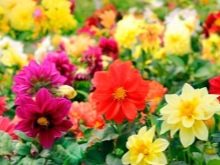
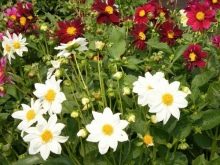

How to grow?
As mentioned above, annual dahlias are grown by seeds or seedlings, in contrast to perennial species, the tubers of which must be stored under special conditions. If you prefer to plant flowers with seeds, then it is advisable to buy them in specialized stores, while choosing well-known manufacturers. Thus, you can reduce the risk of purchasing the wrong variety. Sowing seeds in open ground should be in the middle of spring, when the soil has already dried up and warmed up well.
If the soil is too cold, seed germination will deteriorate significantly. Before planting, it is necessary to mark the territory. For low-growing varieties, it is necessary to maintain a distance of 25-30 cm between plants, and for tall varieties - 50-70 cm.
Seeds should be planted to a depth of about 2-3 cm, watered and sprinkled with peat or mulch.
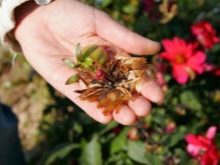
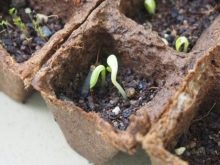

Some gardeners choose to grow flowers from seedlings. This method is especially good for northern regions. The optimal time is the beginning of April, since about 2 months should pass from the moment of the first shoots to flowering. Seeds are placed in separate containers with soil to a depth of 1.5-2 cm, added dropwise, watered and covered with foil... In a few days, the first shoots should appear, and the film can be removed.
Dahlia care is not difficult. To form the correct lush bush, the young sprout should be pinched. In order to keep the flowering flower bed longer, at the first signs of a cold snap at night, it is insulated with a covering material. If you plan to save the seeds for further reproduction, after wilting, the flower head is not cut off so that the seeds ripen. Then they can be collected and dried. Store the collected material in paper bags in a dry place. Dahlias are best planted in a sunny, well-ventilated place. High varieties should be tied up so that the stems do not break off.
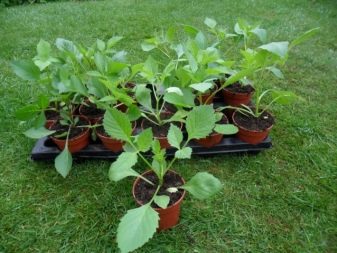
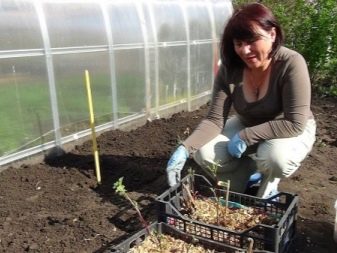
Soil preparation and planting
To get a good harvest, the soil must be properly prepared. The optimal composition for planting flowers should contain nutrient soil, sand and humus. The soil can be bought ready-made in a flower shop, or you can collect it in the meadow, preferably in the place where clover and other herbs bloomed. The composition should contain 2 parts of soil and 1 part each - humus and sand. A few days before planting the plant, the soil must be disinfected with a warm solution of potassium permanganate, and for a greater guarantee - calcined in the oven for 2-3 hours.
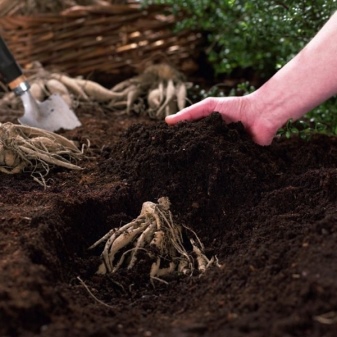
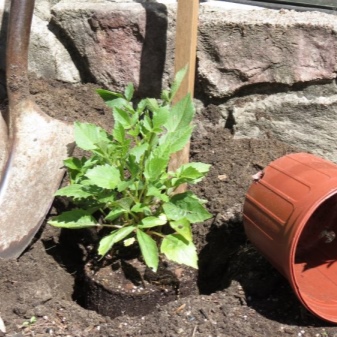
Watering
Dahlias love water, so they need abundant and regular watering. In dry and hot climates, you need to water the plants daily; as the temperature drops, soil moisture can be gradually reduced.
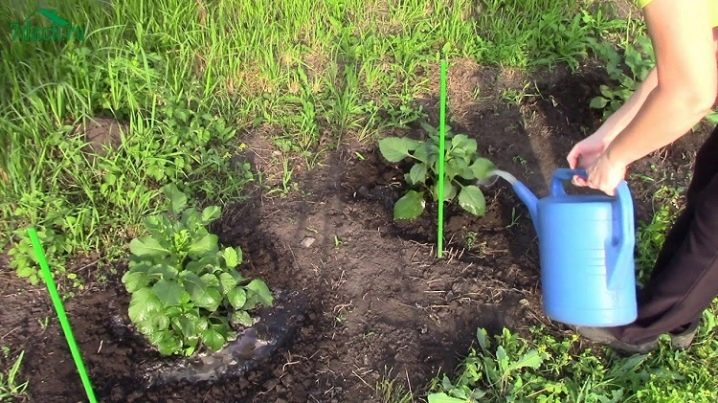
Top dressing
If the plant was originally planted in a nutrient medium, additional feeding is not required. If the soil is poor, it can be fertilized with organic matter in the fall. During the growing season, it is recommended to feed the plants with complex fertilizers - this way they will bloom better... After applying the feed, the bushes need to be watered.
During flowering, the plant can be fed with phosphorus and potassium.

Disease and pest control
Dahlias are most often susceptible to diseases of gray or brown rot, the causative agent of which is a pathogenic fungus. The disease can develop if the seedlings are planted too densely, or there is stagnation of moisture near the roots. The disease manifests itself in the drying out of peduncles and leaves. As a treatment, drugs containing fungicides are used. The landing site must be treated with a lime solution. Leaf spot is an equally frequent disease, it is expressed in the appearance of yellow and brown spots on the leaves. The reason is poor air circulation and dense planting.
Also, the plant can infect various parasitic insects: aphids, strawberry or chrysanthemum nematodes, plant bugs, slugs and other pests. Most often, the affected areas of the plant are cut off, and the flower itself is treated with special preparations.
So, for example, "Fitoverm", "Aktara" help from aphids, and it is recommended to use "Mospilan" or "Iskra-M" for bedbugs.
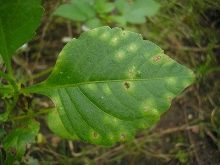

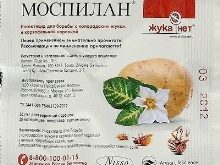
Beautiful examples in garden design
The garden that consists of dahlias is called a dahlia. It can be decorated in one color scheme, for example, white, pink or yellow. The multicolored planting of several varieties looks very beautiful with a smooth transition from light colors to darker ones.To create a greater effect, flowers are planted in the form of an ornament or geometric shapes. Low varieties are usually planted along the edges of the garden paths, and tall plants in the depths of the garden. It should be borne in mind that undersized varieties bloom first. The higher the dahlia variety, the later it blooms. Novice growers are advised to purchase specially selected kits consisting of a mixture of seeds, selected taking into account their growth, color and planting dates.
In addition, dahlias go well with other flowers - phlox, viola, carnation. When forming flower beds, shades of flowers should be taken into account. The most advantageous is a garden bed with a contrasting combination.

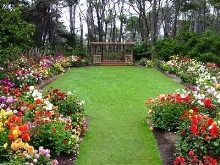
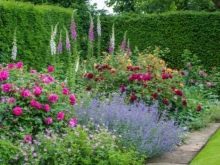
The lighter the color of the dahlia, the brighter the neighbor he should pick up, and vice versa.
In the next video, you will find growing annual dahlias from seeds.







































































































The comment was sent successfully.